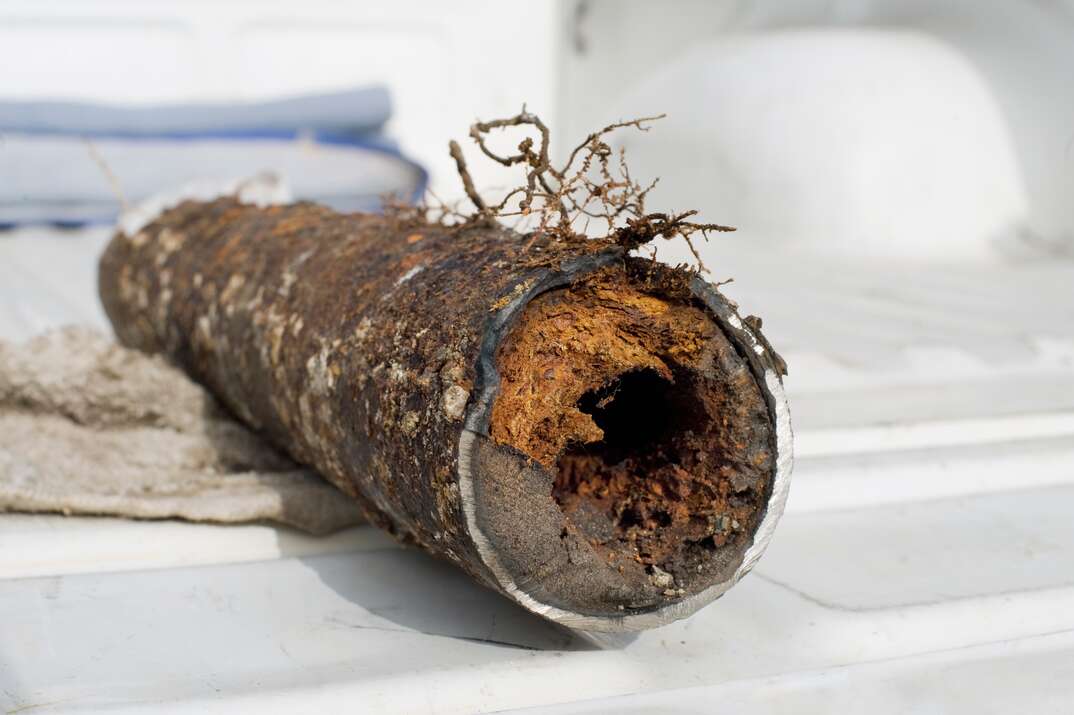What Is Hydrojetting?

“Hydrojetting” might sound like some high-tech way to travel across the water in the latest sci-fi film, but it’s actually a technique used by some plumbers to remove clogs.
Read More Home Improvement Articles
Hydrojetting can be an extremely effective and eco-friendly way to get the job done, but there are some considerations you should take into account before using it on your plumbing system.
How Does Hydrojetting Work?
Much like a pressure washer, a hydrojetting system consists of a tank that pressurizes water and drives it out through a hose. At the end of the hose is a specialized tip that shoots the highly pressurized water out at any obstacles that might be blocking your pipes. There are different tips that can be used depending on the nature of the plumbing system and the clog. Typically, your plumber will do a video inspection of your pipes to determine which kind of clogs you might have and which tips are best to eliminate them.
Beneath the tip are usually three other water outlets that shoot water backward. These reverse water jets effectively propel the tip forward and help clean the sides of the plumbing pipes.
Your plumber will determine where the best spot is in your plumbing system to insert the hose and begin the hydrojetting process.
Hydrojetting Vs. Snaking
If you're a homeowner, you're no doubt familiar with a drain snake. The metal coils at the end of a drain snake can be used to prod at clogs in your sewer line and, by working the tool back and forth, can usually dislodge them. Plumbers employ heavy-duty pipe snakes that work a bit better than typical home-consumer options. They might also use augers, which are special tools that can cut through obstructions as mighty as tree roots.
While snakes and augers can be effective at removing clogs, one advantage hydrojetting holds over them is that the high-pressured water jets that shoot out of the end of the hose not only bust up clogs, but they clean the inside of the pipe walls as well, flushing away grease and other buildups that may have accumulated over time. Hydrojetting can even bust through some tree roots, although if they are thick enough, an auger may have to be employed first.
More Related Articles:
- Calling a Plumber? Here Are the 6 Most Common Plumbing Jobs and How Much They Cost
- 6 Ways to Try to Unclog Your Sink Before You Call a Plumber
- What's in My Plumber's Van?
- Here's How Much It Costs to Remodel a Bathroom
- 6 Tips for Hiring a Plumber
How Do I Know I Need Hydrojetting?
If you notice one drain running slowly in your house, you can likely solve the problem using a snake, chemical drain cleaner or a mix of baking soda, boiling water and vinegar. If you find that all of the water in your house is draining slowly, however, it is probably time to have your entire sewer line cleaned out with hydrojetting.
How Much Does Hydrojetting Cost?
Generally, you can expect to pay as little as $250 to as much as $1,000 to have hydrojetting carried out on your drain lines. The final cost will depend on the size of your system, the extent of the clogging and the cost of living in your area.
Are There Any Risks Associated With Hydrojetting?
Yes — and these risks are important to note. Older homes with pipes that might have weakened over time are not good candidates for hydrojetting. That's because the force of the water might actually cause your pipes to rupture, leading to a bigger problem than the initial clog. In such cases, mechanical augering or treatment with chemicals can be a better clog-busting strategy than using hydrojetting.
If your pipes are in sound condition, though, and you're noticing a slowdown around your drains, hydrojetting is a great option. It avoids the use of harsh, environmentally dubious chemicals and has the added benefit of giving your pipe walls a good cleaning, rather than just breaking up one or two clogs. It's certainly something you should bring up the next time you speak with a professional plumber about any slowdowns in your home's drain lines.
Elocal Editorial Content is for educational and entertainment purposes only. Editorial Content should not be used as a substitute for advice from a licensed professional in your state reviewing your issue. Systems, equipment, issues and circumstances vary. Follow the manufacturer's safety precautions. The opinions, beliefs and viewpoints expressed by the eLocal Editorial Team and other third-party content providers do not necessarily reflect the opinions, beliefs and viewpoints of eLocal or its affiliate companies. Use of the Blog is subject to the
Website Terms and Conditions.The eLocal Editorial Team operates independently of eLocal USA's marketing and sales decisions.



